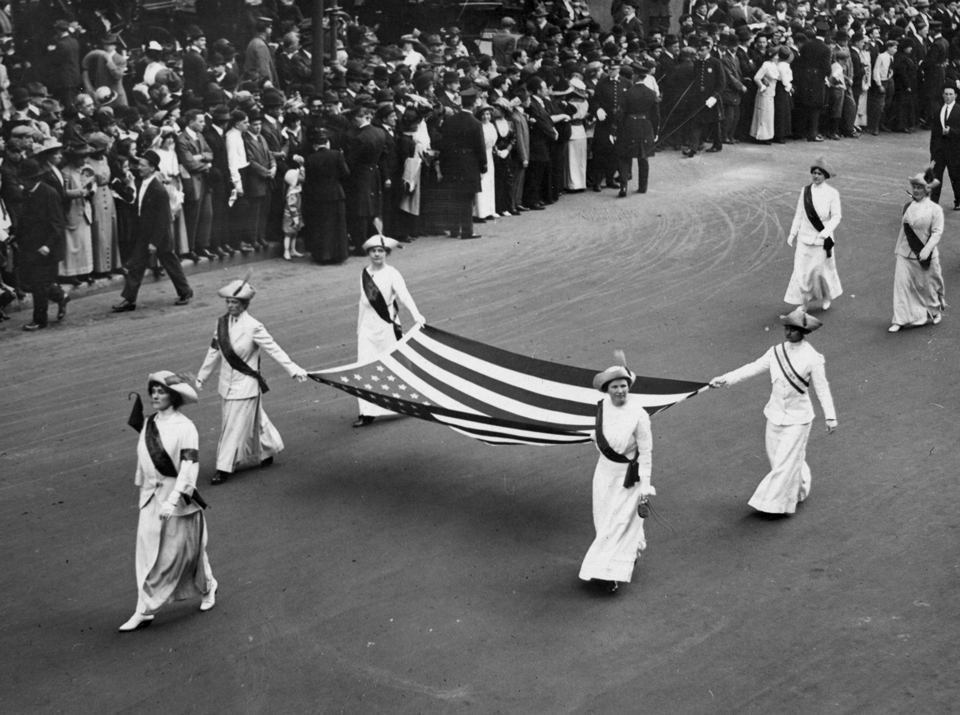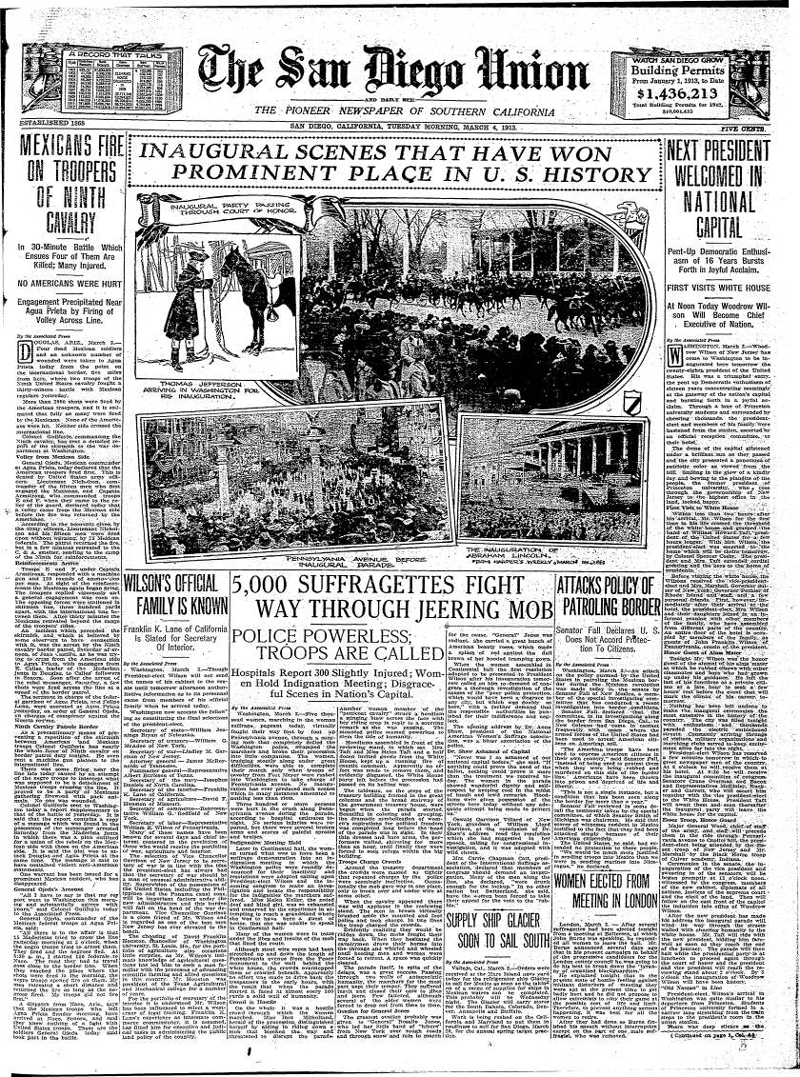Suffragettes carrying the American flag during a Women’s Suffrage Parade in New York, 1913. Photograph by Paul Thompson/Getty Images.
As we celebrate the 100
th anniversary of the historic passage of the 19
th Amendment, guaranteeing women in the United States the right to vote, we reflect on the role clothing and especially color played in the campaign. American Suffragettes of the early 20
th century masterfully worked to shift negative public perception of the movement by dressing in white. Not only was this meant to convey a message of moral purity to critics, but it also created a democratized uniform for suffragists.
Another benefit of wearing white was the visual contrast it created in black and white photography. This is best seen in images from the 1913 women’s suffrage parade in Washington D.C. The march landed on the front pages of newspapers across the country — women in white dresses popped amongst a sea of men in black suits.
The original Women’s March on Washington on the front page of The Sandiego Union, March 4, 1913.
As effective as it may have been, the color white didn’t always work alone. Taking their cue from the British suffragettes — whose campaign colors, green, white and violet stood for “give women the vote” — the National Woman’s party adopted their own official colors as purple, white and golden yellow; loyalty, purity and hope. Yellow replaced green as an homage to Susan B. Anthony and Elizabeth Cady Stanton, who used the sunflower to campaign for a suffrage referendum in Kansas in 1867.
White clothing still resonates today. At the 2019 State of the Union address, congresswomen stood out in coordinated, crisp white ensembles. Presidential nominee Hillary Clinton also wore a white pantsuit during her acceptance speech at the 2016 Democratic National Convention. And when Alexandria Ocasio-Cortez was sworn into office in 2019, she too chose to wear white.
Sartorial choices aren’t always statement-making but, sometimes, they speak louder than words.


